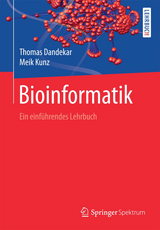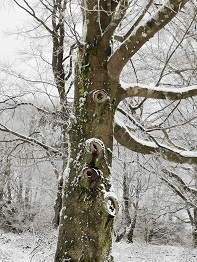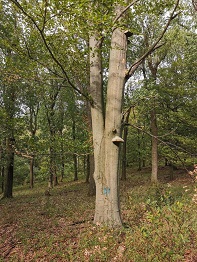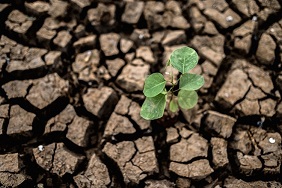Hot Links, Media and Outreach
Hot Links

2. Auflage (2021) https://www.springer.com/de/book/9783662623985
1. Auflage (2017) https://link.springer.com/book/10.1007/978-3-662-54698-7
Pubmed https://pubmed.ncbi.nlm.nih.gov/
Alternativ, falls Pubmed nicht verfügbar: Europe PMC https://europepmc.org/
Alignment/Stammbäume
CLUSTALW/Clustal Omega https://www.ebi.ac.uk/Tools/msa/clustalo/
MUSCLE https://www.ebi.ac.uk/Tools/msa/muscle/
PHYLIP https://evolution.genetics.washington.edu/phylip.html
Datensätze zu biologische Größen/Biotechnologie/synthetische Biologie
BioNumbers https://bionumbers.hms.harvard.edu
BioBricks https://biobricks.org/
GoSynthetic https://gosyn.bioapps.biozentrum.uni-wuerzburg.de/index.php
Dotplot
Dotter https://sonnhammer.sbc.su.se/Dotter.html
GEPARD https://mips.gsf.de/services/analysis/gepard
JDotter https://athena.bioc.uvic.ca/virology-ca-tools/jdotter/
Funktionsdatenbanken
Functional Glycomics https://www.functionalglycomics.org/; https://ncfg.hms.harvard.edu/
Gene Ontology https://www.geneontology.org
Gehirn-Baupläne
Blue Brain Projekt (EU) https://bluebrain.epfl.ch/
Brain Activity Atlas https://www.brainactivityatlas.org/
Brain Activity Projekt (USA) https://www.braininitiative.nih.gov/
Connectome-Projekt https://www.openconnectomeproject.org
Mouse Brain Connectivity Atlas https://mouse.brain-map.org/static/atlas
Neuroaktivitätsdetektion https://www.ncbi.nlm.nih.gov/pubmed/23537512
Temporal lobe https://www.temporal-lobe.com/background/connectome
Virtual Insect Brain Lab https://www.neurofly.de/
WormWiring https://wormwiring.org/
Wurmatlas https://www.wormatlas.org/
Genomannotation/Genannotation/Sequenzanalyse/Online-Bibliotheken/Experimetelle
Datensätze
BLAST https://blast.ncbi.nlm.nih.gov/Blast.cgi
GenScan https://genes.mit.edu/GENSCAN.html
RepeatMasker https://www.repeatmasker.org/
ENCODE https://www.encodeproject.org
Ensembl https://www.ensembl.org/Homo_sapiens/Info/Index
GATK Workshop https://software.broadinstitute.org/gatk/guide/
article?id=7869#1.3
Genomic Science Program https://genomics.energy.gov
Human Genome Project https://web.ornl.gov/sci/techresources/Human_Genome/
index.shtml
UCSC https://genome.ucsc.edu/
DDBJ (DNA Data Bank of Japan) https://www.ddbj.nig.ac.jp/
EBI https://www.ebi.ac.uk/services
European Bioinformatics Institute (Portal), besonders gut für Bioinformatik: Bioperl, Biojava, Programm-Module
iGEM Parts https://igem.org/Main_Page
MEDLINE/NCBI/PubMed https://www.ncbi.nlm.nih.gov/pubmed/
National Center of Biotechnology Information: Allgemeiner Einstieg, viele Datenbanken und Software (Portal)
NIH https://www.genome.gov
OMIM https://www.omim.org/
Swiss Bioinformatics Institute (Portal mit dem Expert Protein Analysis System): https://www.sib.swiss/
WebDirectory https://www.biologydir.com/over-population/p1.html
Computational Population Biology https://compbio.cs.uic.edu/
GENEVESTIGATOR https://genevestigator.com/gv/
GEO https://www.ncbi.nlm.nih.gov/geo/
Grafikprogramme, Modellierung und Netzwerkanalyse
CellDesigner https://www.celldesigner.org/
CellNetAnalyzer https://www2.mpi-magdeburg.mpg.de/projects/cna/cna.html
Cytoscape https://www.cytoscape.org/
COBRA https://opencobra.github.io/
COPASI https://copasi.org/
Flux balance analysis https://systemsbiology.ucsd.edu/Downloads/FluxBalanceAnalysis
Jimena https://www.biozentrum.uni-wuerzburg.de/bioinfo/computing/jimena-c/
MATLAB https://de.mathworks.com/products/matlab.html
Metatool https://pinguin.biologie.uni-jena.de/bioinformatik/networks/metatool/
Odefy https://www.helmholtz-muenchen.de/icb/software/odefy/index.html
PLAS https://enzymology.fc.ul.pt/software/plas/
PottersWheel https://www.potterswheel.de/Pages/
SQUAD https://www.vital-it.ch/software/SQUAD
YANA/YANAsquare https://www.biozentrum.uni-wuerzburg.de/bioinfo/computing/yanasquare/
Interaktionsdatenbank, Medikamenten-Interaktionsdatenbank
catRAPID https://s.tartaglialab.com/page/catrapid_group
HPRD https://hprd.org/
iHOP https://www.ihop-net.org/UniPub/iHOP/
KEGG https://www.genome.jp/kegg/
NPInter https://www.bioinfo.org/NPInter/
PlateletWeb https://plateletweb.bioapps.biozentrum.uni-wuerzburg.de/plateletweb.php
Roche Pathways https://biochemical-pathways.com/#/map/1
STRING https://string-db.org
DrumPID https://drumpid.bioapps.biozentrum.uni-wuerzburg.de/compounds/index.php
STITCH https://stitch.embl.de/
EcoCyc https://ecocyc.org/
Lokalisations-/Motiv-Vorhersage
LocP https://ekhidna2.biocenter.helsinki.fi/LOCP/
LocSigDB https://genome.unmc.edu/LocSigDB/
nucloc https://www.nucloc.org/
NucPred https://www.sbc.su.se/~maccallr/nucpred/
SignalP https://www.cbs.dtu.dk/services/SignalP/
TMHMM https://www.cbs.dtu.dk/services/TMHMM/
Functional Glycomics https://www.functionalglycomics.org/
ELM https://elm.eu.org/
Programmiersprachen
Biojava https://biojava.org/
BioPerl https://bioperl.org/
C++ https://www.cplusplus.com/
Java https://www.oracle.com/technetwork/java/index.html
Perl https://www.perl.org/
Python https://www.python.org/
R https://cran.r-project.org/
Bioconductor https://www.bioconductor.org/
Promotoranalyse
AIModules https://aimodules.heinzelab.de/#/
ALGGEN PROMO
https://alggen.lsi.upc.es/cgi-bin/promo_v3/promo/promoinit.
cgi?dirDB=TF_8.3
Genomatix https://www.genomatix.de/
JASPAR https://jaspar.genereg.net/cgi-bin/jaspar_db.pl
MotifMap https://motifmap.igb.uci.edu/
TESS https://www.cbil.upenn.edu/tess/
TRANSFAC https://www.gene-regulation.com/pub/databases.html
Proteinanalyse
AnDom
https://andom.bioapps.biozentrum.uni-wuerzburg.de/index_new.
html
CATH https://www.cathdb.info/
Conserved Domains https://www.ncbi.nlm.nih.gov/Structure/cdd/wrpsb.cgi
ExPASy https://www.expasy.org
InterPro https://www.ebi.ac.uk/interpro/
MODELLER https://salilab.org/modeller/tutorial/
PDB https://www.rcsb.org/pdb/home/home.do
Pfam https://pfam.xfam.org/
ProDom https://prodom.prabi.fr/prodom/current/html/home.php
PRODORIC https://prodoric.tu-bs.de/
PROSITE https://prosite.expasy.org
PyMOL https://www.pymol.org/
QUARK https://zhanglab.ccmb.med.umich.edu/QUARK/
Ramachandran-Plot https://mordred.bioc.cam.ac.uk/~rapper/rampage.php
RasMol https://www.openrasmol.org/
SCOP (old) https://scop.mrc-lmb.cam.ac.uk/scop/
SCOPe updated https://scop.berkeley.edu/
SMART https://smart.embl-heidelberg.de/
SWISS-MODEL https://swissmodel.expasy.org
UniProt/Swiss-Prot https://www.uniprot.org/
RNA-Analyse
ITS2 https://its2.bioapps.biozentrum.uni-wuerzburg.de/
LNCipedia https://www.lncipedia.org/
mfold Webserver https://unafold.rna.albany.edu/?q=mfold/RNA-Folding-Form
microRNA.org/miRanda https://www.microrna.org/microrna/home.do
miRBase https://www.mirbase.org/
regRNA https://regrna2.mbc.nctu.edu.tw/ (not working, use instead RFAM):
Rfam https://rfam.xfam.org/
Riboswitch-Finder https://riboswitch.bioapps.biozentrum.uni-wuerzburg.de/
RNAAnalyzer https://rnaanalyzer.bioapps.biozentrum.uni-wuerzburg.de/
RNAfold Webserver https://rna.tbi.univie.ac.at/cgi-bin/RNAWebSuite/RNAfold.cgi
TargetScan https://www.targetscan.org
tRNAscan https://lowelab.ucsc.edu/tRNAscan-SE/
Vienna Package https://www.tbi.univie.ac.at/RNA/
Media and Outreach
Unterstützung für WueLab, Forschung und Förderung der Kultur der Nachhaltigkeit Transformationsexperimente



Klimapflanzen - WueLab Beitrag
Wer kennt es nicht? Gerade in mühseliger Arbeit aus dem Garten entfernt, wuchern die Unkräuter in der nächsten Woche schon wieder nach, gefühlt sogar mit doppelter Geschwindigkeit. Um diese wundersame Leistung zu erbringen nutzen Pflanzen neben Licht, sowohl Wasser und Nährstoffe aus dem Boden, als auch Kohlenstoffdioxid aus der Luft, welches im Prozess der Photosynthese, in Sauerstoff umgewandelt wird. Je mehr eine Pflanze an Biomasse zunimmt, desto mehr CO2 kann sie der Atmosphäre entziehen. Pflanzen wirken somit als natürliche Kohlenstoffsenke und sind deshalb Gegstand der Forschung für mögliche Klimamilderungsstrategien an der Julius-Maximilians-Universität (JMU) in Würzburg. An der JMU gibt es verschiedene vielversprechende Ansätze, um Pflanzen zu identifizieren, welche besonders gut für diese Aufgabe geeignet sind.
Auf praktischer Ebene ist ein naheliegender Ansatz, Bäume zu identifizieren und kultivieren, welche in kürzester Zeit sehr viel Biomasse produzieren. Dieser Aufgabe hat sich ein Forschungsteam unter der Leitung von Prof. Jörg Müller gewidmet. In der ökologischen Außenstation der JMU im Steigerwald wollen die Forscher gezielt natürliche Varianten von Bäumen (Protzen) identifizieren (Bild), die fähig sind, eine größere Menge CO2 zu speichern, als herkömmliche Bäume, jedoch auch klimarestistent sind und in der Nähe von Städten gut wachsen können. Herr Müller bietet an seinem Lehrstuhl Praktika, Knowhow und Forschungsarbeiten an, um der Waldökologie in Zeiten des globalen Wandels auf den Grund zu gehen und freut sich auf interessierte Studenten.
Auf theoretischer Ebene gibt es an der JMU ebenfalls Ansätze mit großem Potenzial. Der Lehrstuhl für Bioinformatik beschäftigt sich schon lange mit der Aufgabe, Stoffwechselwege in Pflanzen, sogennante Pathways, mit Hilfe des Computers zu untersuchen. Ein Ziel ist es beispielsweise, durch die Untersuchung von Pathways verschiedener Pflanzen, Methoden zu identifitzieren welche es manchen Pflanzen erlaubt, mehr CO2 aufzunehmen als anderen. Im Moment prüfen die Forscher der Bioinformatik Transkriptomdaten, um heraus zu finden, wie sich die metabolischen Flüsse in Modellpflanzen, wie zum Beispiel Arabidopsis thaliana, aber auch bei Algen und Bäumen ändern, wenn die CO2-Konzentrationd er Atmosphäre steigt.
Auf didaktischer Ebene bietet der Lehrstuhl für Bioinformatik der JMU verschiedene Möglichkeiten an, um tiefer in das Thema Klimapflanzen und andere Klimamilderungsstrategien einzutauchen. In den Master-Praktika F1 und F2, kann man alles über die bioinformatiche Modellierung von Klimapflanzen und die experimentelle Validierung lernen. Ein weiterer sehr empfehlenswerter Kurs ist „Smart City“, in dem es um die Vision einer modernen intelligenten und nachhaltigen Stadt geht.
The majority of our papers is full available as free PMC articles, i.e. :
Thomas Dandekar
Complexation with C60 Fullerene Increases Doxorubicin Efficiency against Leukemic Cells In Vitro.
HPLC-ESI-MS method for C60 fullerene mitochondrial content quantification.
In Silico Designed Axl Receptor Blocking Drug Candidates Against Zika Virus Infection.
Identification of Antifungal Targets Based on Computer Modeling.
A combined tissue-engineered/in silico signature tool patient stratification in lung cancer.
Jörg Schultz
Elena Bencúrová
Marcus Dittrich
Alexander Keller
Tobias Müller
Matthias Wolf
"Bioinformatik" (Dandekar and Kunz, second edition WS 2021, english edition SS 2023)
"Regulatory RNA" (Dandekar and Sharma, 1998)
"RNA Motifs and Regulatory Elements" (Dandekar, ed.; Dandekar, Bengert, Ostareck and Ostareck-Lederer, 2002)
"Auxins and Cytokinins in Plant Biology" (Dandekar and Naseem, 2017)
Sendung "Retten Super-Pflanzen unser Klima?" am 17.06.2020 bei "nano" in 3Sat
(Link zur Mediathek: https://www.3sat.de/wissen/nano/200617-co2-absorber-genpflanzen-mit-klimaturbo-100.html)
Sendung "Bioinformatik" am 13.02.2014 bei "Scobel" in 3sat








